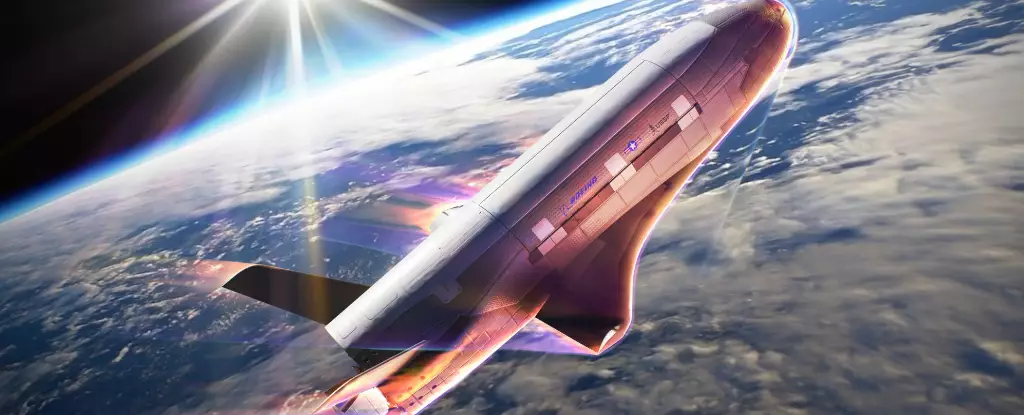The X-37B Orbital Test Vehicle (OTV) continues to be a subject of intrigue and speculation as it embarks on its seventh mission. Operated by the US Space Force (USSF) since its inaugural flight in 2011, the X-37B is designed to advance technologies for reusable space systems while conducting various scientific experiments in Low-Earth Orbit (LEO). This article delves into the latest operational maneuvers, the technological innovations represented by the X-37B, and the broader implications of its missions for national security and space exploration.
The X-37B was launched on December 29, 2023, for its seventh mission, dubbed OTV-7. Unlike traditional space missions primarily conducted for research and science, the X-37B operates within a framework that intertwines military strategy with technological advancement. Although specifics regarding the mission remain classified, it has been reported that the spacecraft is investigating the impacts of space radiation and testing capabilities related to Space Domain Awareness (SDA).
In this mission, one notable aspect is the innovative aerobraking maneuver that the vehicle will execute. Aerobraking involves the vehicle closely passing through the Earth’s upper atmosphere to adjust its orbit effectively with minimal energy expenditure. This technique aids in both orbit modification and enhances the vehicle’s clandestine capabilities, allowing it to execute surveillance without being readily detected.
The implementation of aerobraking by the X-37B is unprecedented for this spacecraft, marking a significant milestone for US military space operations. The maneuver draws from decades of experience from successful missions to the Moon and Mars, particularly methods utilized by various Mars orbiters, including the Mars Global Surveyor and Mars Reconnaissance Orbiter. Spacecraft have effectively employed solar panels and atmospheric interactions to gradually lower their orbits for more effective operations—lessons that appear to have been adapted for this advanced vehicle.
Air Force Secretary Frank Kendall highlighted the innovative nature of these maneuvers, noting the efficiency they bring to national security operations. By using such techniques, the X-37B not only reduces fuel consumption but also employs a tactical edge that complicates tracking and prediction efforts of potential adversaries.
Despite its undeniable technological prowess, much about the X-37B remains shrouded in secrecy. The vehicle’s stealthy orbital profile has the potential to bewilder adversarial tracking systems. As former U.S. Air Force Secretary Heather Wilson articulated during the 2019 Aspen Security Forum, the X-37B can operate in an “egg-shaped” orbit, making predictions about its overhead appearances challenging for enemies. This capability intentionally introduces unpredictability into its operational timeline, creating headaches for those monitoring U.S. space movements.
Astronomer Jonathan McDowell elaborated on this concept, describing how the vehicle’s atmospheric dips disrupt established tracking methodologies. Such intricacies enable the X-37B to evade detection effectively, lending credence to its role as an asset of strategic importance.
The X-37B is not solely about military prowess; it also serves as a platform for scientific inquiry. The ongoing OTV-7 mission includes experiments designed to study the influence of space radiation on biological materials. Specifically, the “Seeds-2” initiative aims to observe how exposure to cosmic conditions affects plant seeds, a project that underscores the dual nature of the spacecraft as both a tactical instrument and a scientific research vehicle.
Moreover, the USSF has emphasized that part of the mission’s protocol involves adhering to standards for minimizing space debris, reinforcing the importance of sustainable practices even in performances governed by military objectives. This alignment showcases a broader commitment to responsible space operations during a time when space junk presents an increasing risk to onboard missions.
As the X-37B completes its aerobraking maneuvers and continues its operational testing, it exemplifies the United States’ approach to maintaining superiority in an increasingly competitive space environment. The spacecraft symbolizes a fusion of advanced technology, strategic national interests, and scientific exploration. As future missions unfold, they may redefine not only how military operations are conducted in orbit but also how humanity explores and utilizes space, all while highlighting the ongoing need for secrecy, tactical innovation, and scientific inquiry in the final frontier.

Leave a Reply